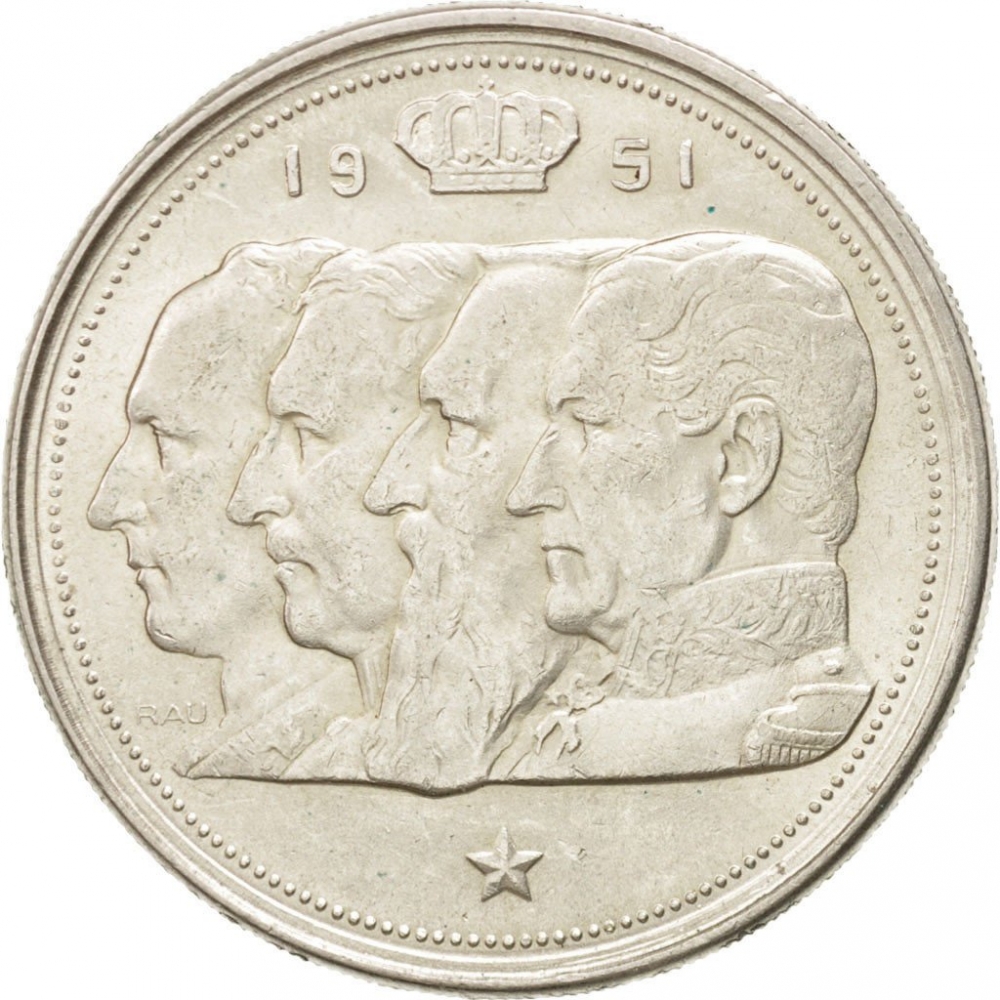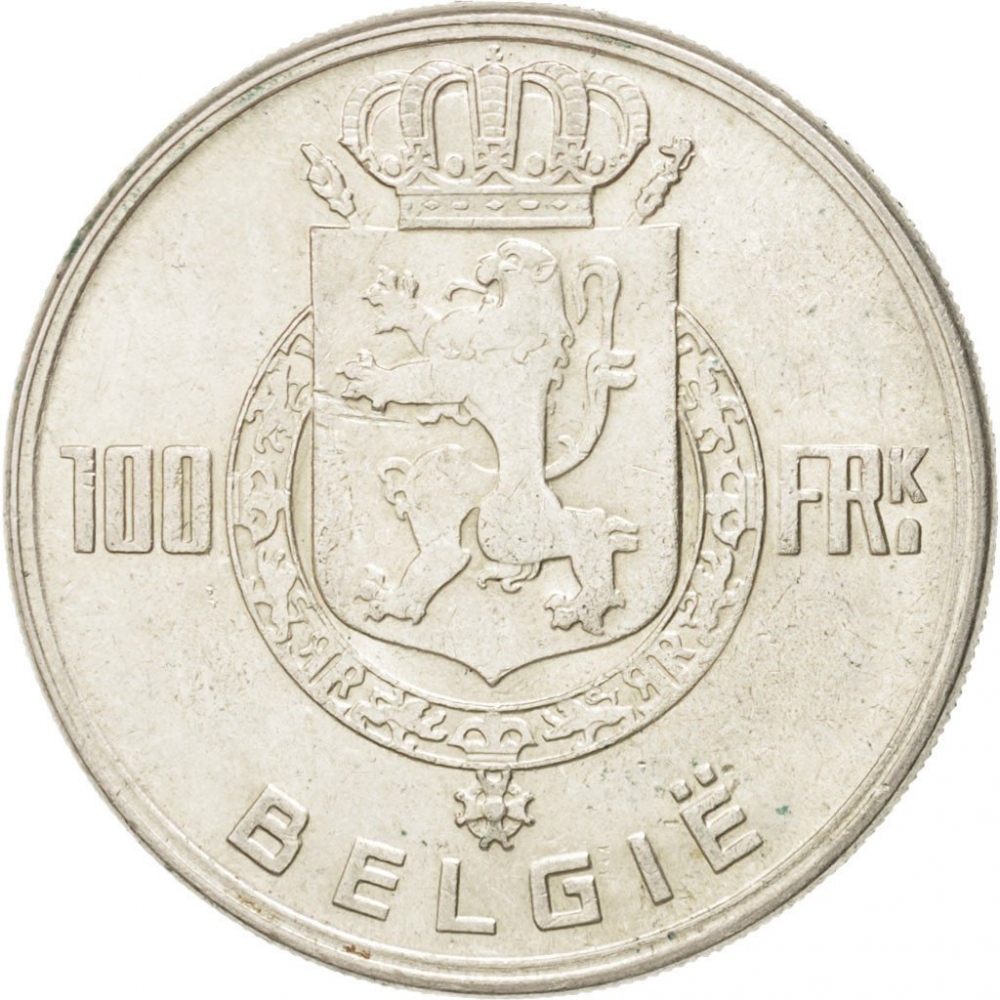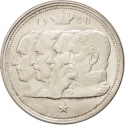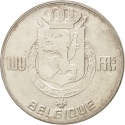You are about to finish your registration. Please check your mailbox (including spam folder). There should be a letter with a confirmation link. Check setting to make sure that your e-mail address is correct.
Send letter againDescription
Leopold III (1901–1983) reigned as King of the Belgians from 1934 until 1951, when he abdicated in favour of the heir apparent, his son Baudouin. From 1944 until 1950, Leopold's brother, Charles, served as prince regent while Leopold was declared unable to rule. In 1950, the debate about whether Leopold could resume his royal functions provoked a political crisis known as the Royal Question.
Engraver: Marcel Rau
Obverse

|
Heads of Kings Leopold I, Leopold II, Albert I and Leopold III facing left. Crown dividing date above. 5-pointed star below. 19 51 |
|---|---|
Reverse

|
Depicts the Belgium lesser coat of arms dividing facial value. Legend in Dutch below. 100 FRk |
| Edge |



